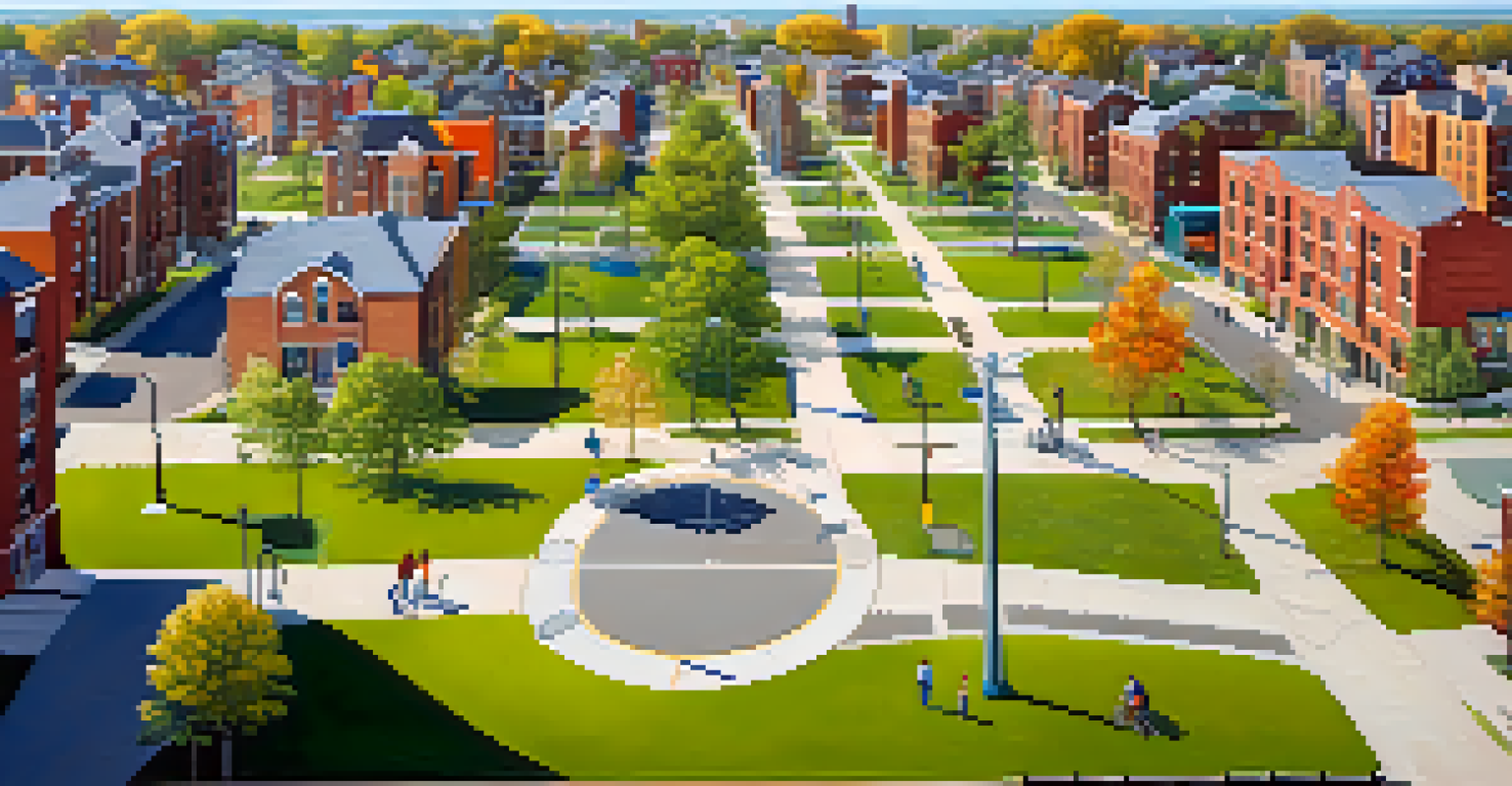Comparing Detroit's Crime Rates with Other Major US Cities

Overview of Crime Rates in Major US Cities
Crime rates can vary significantly across different cities in the United States. Each city has its own unique challenges and circumstances that contribute to these statistics. Understanding these rates helps us grasp the broader social dynamics and safety perceptions in urban areas.
Crime is a product of social and economic conditions; it is not an inherent trait of individuals or communities.
For instance, cities like New York and Los Angeles often report lower violent crime rates compared to others, while cities like Detroit have historically struggled with higher rates. This variance isn't just about numbers; it reflects underlying issues such as economic conditions, policing practices, and community engagement.
Ultimately, a comparison of crime rates provides valuable insights into urban living, revealing not just the challenges but also the potential for growth and improvement within these communities.
A Closer Look at Detroit's Crime Statistics
Detroit has long been recognized for its high crime rates, particularly in violent crimes such as homicide and aggravated assault. According to recent FBI data, the city consistently ranks among those with the highest crime rates in the nation. This reality can be alarming for residents and potential visitors alike.

However, it's essential to consider the context behind these figures. Factors such as economic hardship, systemic poverty, and historical challenges have contributed to the city's struggles with crime. Understanding these underlying issues helps to frame the conversation around safety in Detroit.
Crime Rates Vary by City
Different cities in the U.S. face unique challenges that influence their crime rates, reflecting broader social dynamics.
Moreover, recent efforts by local government and community organizations aim to address these challenges and improve safety. Initiatives focused on community policing, youth engagement, and economic development are steps toward a safer Detroit.
Detroit vs. Chicago: A Crime Rate Comparison
When comparing Detroit to Chicago, both cities have their unique crime landscapes. Chicago has faced significant challenges with gun violence and gang-related crimes, often overshadowing other aspects of its crime statistics. While Detroit's crime rates are notably high, Chicago's issues also reveal complexities in urban crime dynamics.
The strength of a community is not measured by the absence of crime, but by the presence of opportunities.
For example, in 2020, Chicago reported fewer homicides per capita than Detroit, despite having a larger population. This disparity highlights how different cities can experience crime in varied ways, influenced by factors like policing strategies and community resources.
Understanding these comparisons allows us to appreciate the nuances of urban safety. It sheds light on what each city is doing to combat crime and how lessons can be shared to foster safer environments.
Comparing Detroit to Baltimore's Crime Rates
Baltimore and Detroit often find themselves in similar conversations regarding crime rates, particularly concerning violent crimes. Both cities have faced challenges related to drug-related violence and systemic issues affecting public safety. Comparing them helps to understand broader patterns in urban crime.
Baltimore, for instance, has made headlines for its high murder rate, similar to Detroit. However, the context—such as community programs and police practices—can vary significantly, influencing the effectiveness of crime reduction strategies in each city.
Economic Factors Drive Crime
High unemployment and poverty levels in cities like Detroit contribute significantly to the prevalence of crime.
By examining the similarities and differences, we can identify potential solutions that cities like Detroit might adopt from Baltimore's successes, fostering a collaborative approach to crime reduction across major urban areas.
The Role of Community Programs in Crime Reduction
Community engagement plays a pivotal role in reducing crime rates. In Detroit, various programs aim to empower residents, offering resources and support to create safer neighborhoods. Initiatives that focus on youth mentorship, job training, and community policing have shown promising results.
When communities come together to address crime, they create a network of support that can deter criminal activity. For example, neighborhood watch programs and local events foster a sense of belonging, which can lead to increased vigilance and cooperation with law enforcement.
This grassroots approach emphasizes the importance of community involvement in crime prevention. As Detroit invests in these programs, it can help shift the narrative around crime rates, showcasing how positive action can lead to safer environments.
Economic Factors Contributing to Crime Rates
Economic conditions are a significant factor influencing crime rates in any city, and Detroit is no exception. High unemployment rates, poverty, and lack of access to education can create an environment where crime becomes a viable option for some individuals. Addressing these economic disparities is crucial for reducing crime.
In cities with robust job markets and educational opportunities, crime rates tend to be lower. Conversely, areas grappling with economic decline often see spikes in criminal activity. This correlation underscores the need for comprehensive economic strategies to tackle crime at its roots.
Community Programs Aid Safety
Initiatives focused on community engagement and support play a crucial role in reducing crime and improving safety.
Efforts to revitalize Detroit's economy through investment, education, and job training programs are essential steps toward creating a safer city. By improving economic conditions, Detroit can work toward reducing its crime rates and enhancing the overall quality of life for its residents.
Future Outlook for Crime Rates in Detroit
Looking ahead, the future of crime rates in Detroit hinges on a combination of community engagement, economic revitalization, and effective policing strategies. As the city continues to implement programs aimed at improving safety and supporting residents, there is a sense of optimism for change.
Moreover, collaboration between local government, law enforcement, and community organizations can foster a holistic approach to crime reduction. This collective effort can lead to innovative solutions that address the root causes of crime, rather than just its symptoms.

With ongoing dedication and investment in community-driven initiatives, Detroit has the potential to transform its crime narrative. As the city works toward a safer future, the strides made will not only impact crime rates but also enhance the overall community spirit.